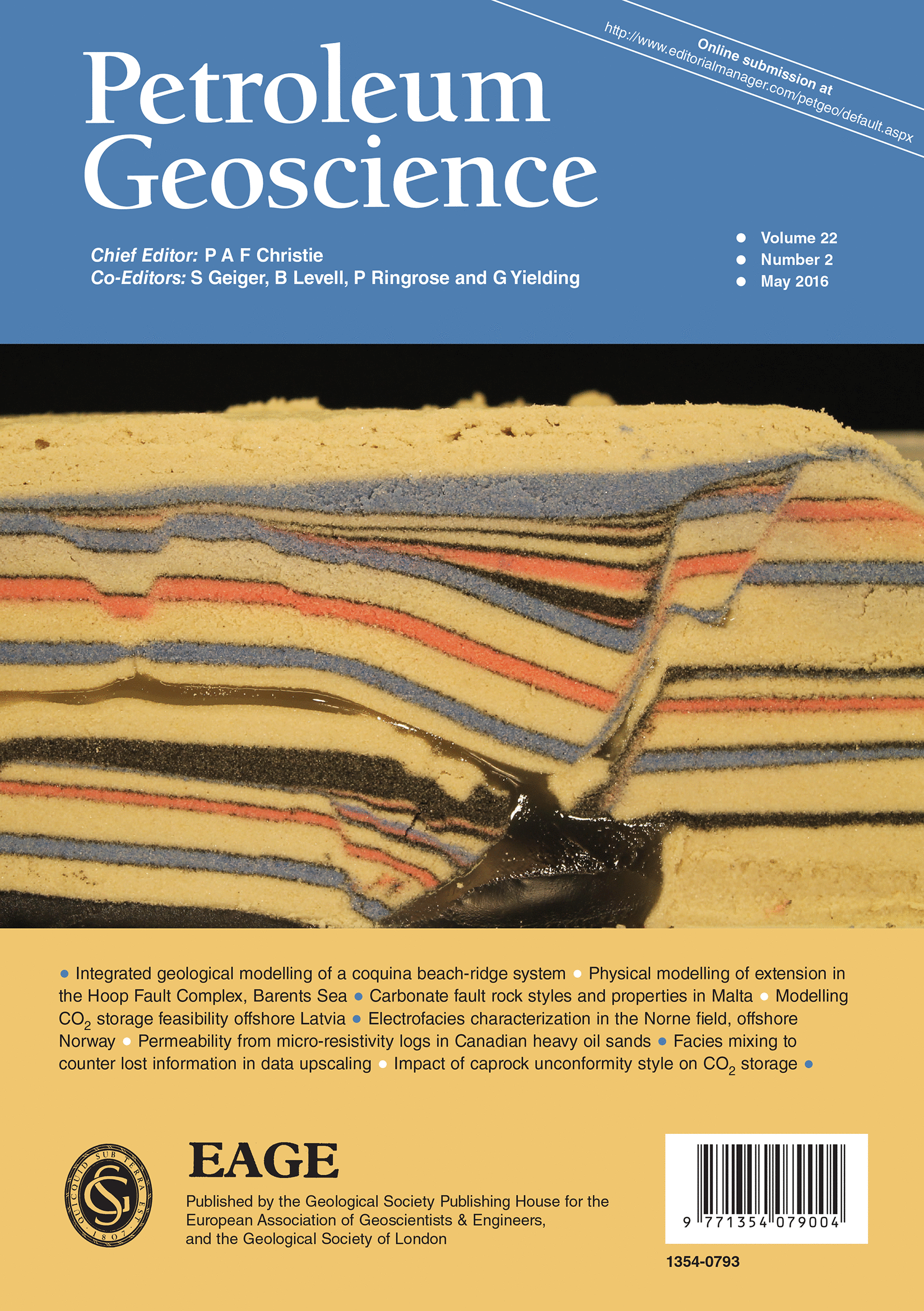
Full text loading...
A series of analogue experiments utilizing sequences of sand with interlayered silicone polymer have been performed to investigate the effects of multistage extension on rock sequences of different strength, with particular reference to the Hoop Fault Complex of the Barents Sea.
It was found that the width and style of the graben systems as seen in map view depend strongly on the extension velocity. Wide areas of graben formation are promoted by fast extension, whereas narrowly constrained deep-graben structures are typical of slow extension rates. Furthermore, the decoupling strata are likely to be characterized by flow rather than by distinct detachment faults.
The scaled experiments produced units of contrasting fault frequencies and styles in individual sand layers positioned between layers of silicone polymer. It was also found that the fault segments developed from different levels were related to varying extents (hard-linked, soft-linked, firm-linked, unlinked).
The fault configurations and the general fault pattern obtained in the experiments is similar to that observed in natural faults where salt or unconsolidated mudstone separate sequences of sand.

Article metrics loading...

Full text loading...
References


Data & Media loading...

